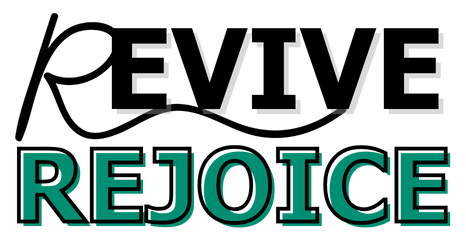Warning For Seniors: The Shocking Impact Of Poor Nutrition Is Making You Sick Faster Than You Think (Are You At Risk?)
A quiet crisis is unfolding at dinner tables across America. After years of decline, mortality related to malnutrition in older adults has seen a staggering resurgence.
A 2024 study analyzing U.S. death certificates revealed that after 2013, malnutrition-related mortality rates began to rise by an average of 5.50% per year, with the sharpest spike (an annual percent change of 22.51%) occurring between 2013 and 2021.
Perhaps you’ve noticed an aging parent has no appetite, is losing weight, or seems weaker, but you’ve dismissed it as “just part of getting old.” This article will show you why that is a dangerous assumption.
This article moves beyond “eat your vegetables.” We will use 2024 and 2025 data to reveal how poor senior nutrition directly leads to immune system collapse, muscle wasting (sarcopenia), cognitive decline, and increased hospitalizations.
Most importantly, we will provide a concrete, 2025-ready action plan to reverse this trend. The link between senior malnutrition statistics and poor health outcomes is no longer ignorable.
THE RISK FUNNEL
The Hidden Path to Hospitalization
(At Risk)
(High Risk)
(Diagnosed)
The Scale of the Crisis: A 2025 Statistical Snapshot

The true scale of the senior malnutrition statistics crisis is often hidden, only becoming apparent when it is too late. The problem exists in two starkly different realities: malnutrition at home versus in the hospital.
A 2024 systematic review established a frightening contrast: while the pooled prevalence of high malnutrition risk in community-dwelling seniors is 8.5%, that number explodes to 28.0% within the hospital setting.
This 3.3-fold jump is not a coincidence. It illustrates a “revolving door” effect: poor nutrition at home, which may go unnoticed, weakens the body. This weakness is a primary driver of the very events—like falls or infections—that lead to hospitalization.
Seniors are not just at risk in the community; they are getting sick from poor nutrition and then being diagnosed in the hospital. Once admitted, their malnourished state makes recovery significantly harder, leading to longer stays and a high risk of re-admission.
This is not just a U.S. problem. Globally, there were 97.60 million cases of malnutrition in the elderly in 2021, a 1.2-fold increase from 1990. As the world population ages, this burden is forecast to grow, with estimates projecting 29.64 million new cases globally by the year 2046.
The U.S. population is aging rapidly, with nearly a quarter expected to be 65 or older by 2060 , making this an urgent public health priority.
This trend has a fatal end. As the 2024 U.S. study confirmed, the crisis is resurging. The fact that these mortality rates are spiking after a period of decline is the central, shocking fact of this article.
The analysis found this reversal in every age group, but the group over 85 years old saw the highest annual rise in malnutrition-related deaths.
From Colds to Crises: How Malnutrition Collapses the Immune System

We all know that a poor diet can make you more susceptible to “catching a cold.” But for an older adult, the 2024 and 2025 data shows that a poor nutritional state is the difference between a mild illness and a life-threatening crisis.
A weakened immune system from poor nutrition does not just mean more sniffles; it means the body is unequipped to fight serious infections.
Pneumonia is a primary example, as it remains a leading cause of death in older adults. Malnutrition is its key accomplice. A 2023-2024 study of older adults hospitalized with community-acquired pneumonia (CAP) found that malnutrition was an independent risk factor for worse outcomes.
This is a critical distinction. It means that even after researchers accounted for a patient’s age, other chronic diseases, and smoking history, their nutritional status itself was a separate, powerful predictor of whether they would recover. This elevates nutrition from a simple “wellness” topic to a “critical medical” factor.
When a malnourished senior is hospitalized for an infection (like the flu or pneumonia) , their outcomes are statistically catastrophic. A 2024 study provides the shocking numbers. Compared to well-nourished patients, malnourished individuals had significantly higher rates of:
- ICU admission (52.82% vs. 29.23%)
- Mechanical ventilation (45.13% vs. 16.41%)
- Septic shock (29.23% vs. 10.77%)
- Death (27.18% vs. 14.87%)
This data is the definitive proof of the “shocking impact” in this article’s title. Furthermore, this compromised state affects every aspect of recovery.
Malnutrition, especially protein deficiency, impairs the body’s ability to create collagen, which is essential for healing. This leads to higher rates of impaired wound healing and surgical site infections, which can cascade into sepsis.
The “Shrinking” Senior: Sarcopenia, Protein, and the Inevitable Fall

Have you noticed a loved one looking frail, or “shrinking”? This is not a normal part of aging. It has a name: sarcopenia. Defined as the age-related loss of muscle mass, strength, and function, sarcopenia is not inevitable. It is, however, dramatically accelerated by poor senior nutrition.
The prevalence of this condition is alarmingly high. 2024 studies show sarcopenia rates between 17% and 20.7% in the general senior population. The risk increases with age, with one study finding the prevalence in women aged 80 and older to be over 25%.
The “smoking gun” for this condition is the single most important factor you can change: protein intake.
A landmark 2025 study on older individuals provided the clearest evidence to date: those with protein intake below recommendations had 2.43 times the odds of muscle mass loss and 2.19 times the odds of strength loss.
The solution is just as clear, and it requires a new way of thinking about protein. The old Recommended Dietary Allowance (RDA) of 0.8 grams of protein per kilogram of body weight is insufficient for older adults.
The 2025 scientific consensus is that healthy older adults require 1.0–1.2 g/kg/day to maintain muscle, and those with chronic or acute conditions need 1.2–1.5 g/kg/day.
This new guideline was validated by a 2025 clinical trial on elderly females with sarcopenia, which found that a moderately high protein diet (1.2 g/kg) significantly improved muscle mass and function compared to the standard 0.8 g/kg diet.
For a 150-pound (68kg) senior, the new 1.2 g/kg goal is 82 grams of protein, far more than the old 54g RDA. That 28-gram difference is the equivalent of an entire extra chicken breast or four eggs per day.
Is Your “Normal” B12 Level Harming Your Brain? The Nutrition-Cognition Link

For years, we’ve been taught that a “normal” result on a blood test is good news. The latest 2025 research on nutrition and cognitive decline suggests this is dangerously simplistic, especially regarding Vitamin B12.
A groundbreaking study from UC San Francisco, published in February 2025, delivered a shock to the medical community.
Researchers found that older, healthy adults with “normal” B12 levels—but on the low end of that normal range—still showed more white matter damage in their brains than those with higher levels.
White matter is the network of nerve fibers that allows different brain regions to communicate. These same individuals also scored lower on tests measuring slower cognitive and visual processing speeds.
This data challenges our entire definition of “B12 deficiency.” A “normal” test result may no longer be a guarantee of good brain health.
This is a paradigm shift. It means you must be an advocate for your own health or the health of your loved one, having a more advanced conversation with a doctor.
The question is not, “Is this level normal?” but rather, “Is this level optimal for brain health?”. B12 deficiency is often under-diagnosed and may be a preventable cause of cognitive decline.
This theme of personalization extends to other nutrients. The media often touts fish oil (Omega-3s) as a magic bullet for brain health. However, a major August 2024 clinical trial from OHSU found no significant cognitive benefit for fish oil in the general older adult population.
But the study held a fascinating clue: in the same trial, participants who carried the APOE4 gene (a known high-risk gene for Alzheimer’s) did show a reduction in nerve cell breakdown.
Stop Sarcopenia!
The 2025 Protein Guideline Upgrade
The 4 Red Flags: Key Deficiencies Hiding in Plain Sight

The impacts of poor senior nutrition are frightening, but their causes are often linked to a few common, correctable deficiencies. Be on the lookout for these four red flags.
Vitamin D: This vitamin is essential not only for bone health (working with calcium) but also for a properly functioning immune system.
It is incredibly common for seniors to be deficient, as their skin is less efficient at producing it from sunlight. Studies show that a staggering 61% of older adults in the U.S. are deficient.
Iron: An iron deficiency is not just about “feeling tired.” In older adults, iron deficiency anemia is rampant. A 2024 study of patients in geriatric units found a prevalence of 57.6%. This deficiency was directly linked to poorer physical performance (low SPPB scores) and anemia.
Vitamin B12: Beyond the cognitive link, a B12 deficiency can cause debilitating fatigue and irreversible nerve damage. A key problem is that absorption of B12 from food often decreases with age due to lower stomach acid.
Fluids (Dehydration): This is one of the most common and acute risks. A reduced sense of thirst is a natural, but dangerous, part of the aging process.
This dehydration is a direct cause of hospitalization, confusion, delirium, urinary tract infections, and falls. The data is stark: one study revealed that 37% of older adults admitted to the hospital from long-term care facilities were dehydrated.
The 2025 Action Plan: A 3-Tiered Strategy for Rebuilding Health
The data is overwhelming, but the solutions are clear. Preventing poor senior nutrition is possible, but it requires a proactive, multi-step approach. This 3-tiered plan provides concrete actions you can take today.
Tier 1: At-Home Strategies (For Caregivers & Seniors)

Fight Low Appetite: For a senior with a low appetite, a large plate of food is overwhelming. The key is to serve smaller, nutrient-dense portions and snacks throughout the day. Boost flavor with herbs, spices, and healthy fats (like olive oil) instead of excess salt.
Make Protein the Priority: Focus on that 1.0–1.2 g/kg daily goal. This is the cornerstone of preventing sarcopenia.
Actionable Tip: Add unflavored whey protein isolate or collagen powder to smoothies, soups, oatmeal, or even coffee. Prioritize high-quality protein sources like eggs, Greek yogurt, cottage cheese, fish, and poultry.
Make Meals Social: Eating alone is a significant risk factor for poor nutrition, isolation, and depression. The simple act of sharing a meal can improve mood and increase food intake.
Involve the senior in meal planning and preparation to give them a sense of control and anticipation. Resources like AARP’s “Cooking for Caregivers” series can provide simple, healthy meal ideas.
Hydrate Proactively: Do not wait for a senior to “feel thirsty.” By then, they are already dehydrated. Set a schedule, use a water bottle with time markings, or offer hydrating foods like melon, soup, and cucumbers.
Tier 2: Professional Guidance (When to Call for Help)

Consult a Registered Dietitian (RDN): This is the most important step you can take. An RDN is the only health professional specifically trained to create a tailored eating plan.
They are experts at preventing poor senior nutrition by working around medication side effects, dental problems, swallowing issues, and chronic conditions like diabetes or heart disease. The Academy of Nutrition and Dietetics (AND) emphasizes this individualized approach.
Talk to the Doctor (with New Questions): Go to the next check-up armed with this new data.
Actionable Script: “I am concerned about my parent’s cognitive speed and low energy. Given the 2025 UCSF research , could we check their B12 level and discuss what is optimal for brain health, not just ‘normal’?”
Tier 3: Community & Financial Support (The Help You Deserve)

Meals on Wheels: This service is far more than just a meal. It is a vital wellness and social check-in that combats the dangerous isolation that leads to poor nutrition. As demand for these services grows, their role is more critical than ever.
Actionable CTA: To find a local provider for yourself or a loved one, use the national database at: MealsonWheelsAmerica.org/Find-Meals.
Supplemental Nutrition Assistance Program (SNAP): Many seniors are eligible for food assistance and do not know it, leaving billions of dollars in benefits unclaimed. The 2025 guidelines make it easier to qualify.
Actionable Data (Effective Oct. 1, 2025): For a household of 1, the maximum monthly gross income to qualify is $2,608. For a 2-person household, it is $3,525.
Crucial Fact: For seniors (age 60+), medical expenses over $35 per month can be deducted from income, making it even easier to qualify. Other programs, like the Senior Farmers Market Nutrition Program (SFMNP), also provide support.
2025 SENIOR SUPPORT TOOLKIT
Tap a button to activate your support network.
It’s a vital wellness safety check and a friendly face at your door.
Ask an RDN to create a custom nutrition plan that specifically works with your medications and health conditions.
Conclusion
Poor senior nutrition in 2025 is not a passive decline; it is an active, resurgent crisis with measurable, severe consequences. It is the accelerant for life-threatening infections, the primary driver of muscle-wasting sarcopenia, and a key, correctable risk factor for cognitive decline.
The data is clear: waiting is not an option. The line between healthy independence and a life-altering fall, or between a mild cold and a lengthy ICU admission, can often be found on the end of a fork.
The assumption that poor appetite and frailty are “just part of getting old” is the most dangerous assumption of all.
Use the 3-tiered plan to start a new conversation with your loved one or your doctor today. Share this article with anyone who needs to hear it. The power to reverse this trend is within reach.








